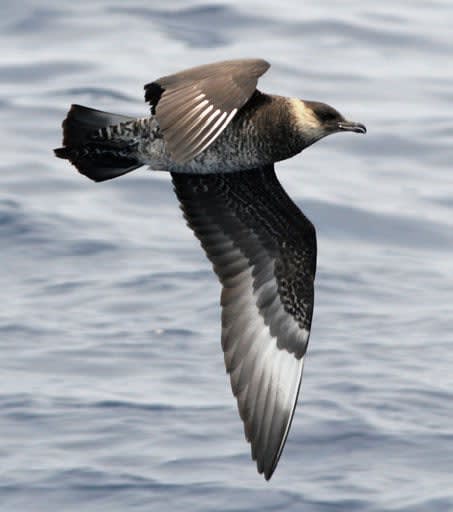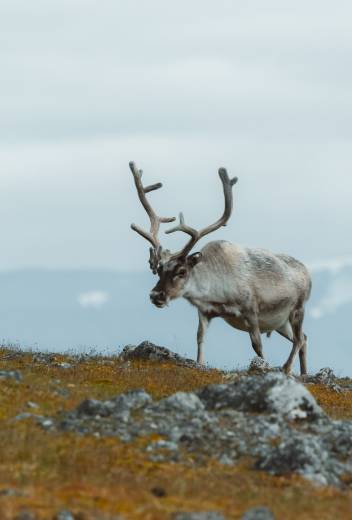One of the fascinating species you’ll come across on your Galapagos Islands cruise is the pomarine skua.
Seabirds are one of the glories of the Galapagos and this elegant and buoyant flyer with wide wing span doesn’t disappoint. Found breeding on the coastal Islands, pomarine skua are great travelers and migrate once a year to spend the winter in the Southern Hemisphere.
The pomarine is the only variety of skua you’ll find in the Galapagos, where you’ll almost certainly have a chance to view and photograph them in their natural environment.

Skuas Breed in Spring; Migrate Late Summer to Early Fall
The skuas reach their breeding grounds in April and depart in July, and nest on arctic tundra and islands. They build their nests on the ground in a grass-lined hollow, and have two to three eggs annually.
Breeding adults have extraordinary tails. The two central tail feathers are much lengthier than the others. They are spoon-shaped, and curled. Skua adults moult their body feathers once a year, and tail feathers twice a year.
The skuas migrate in late summer and early autumn. They spend winters at sea over tropical oceans, although a few birds stay in warmer North Atlantic waters during the winter. Their active migration flight is constant and uninterrupted. They have slow wingbeats, similar to a large gull. Even in powerful winds, their active flight is executed with almost automatic wingbeats. When not in migration these birds can be seen loafing around, flying up and down the shoreline.
The Avian Pirates of the Galapagos
Pomarine skuas are known as pirates or predators, and feed on lemmings, carrion, scraps and smaller birds. They are belligerent and agile, pursue other birds and then steal their kill. They attack in the air and force victims to release their prey in flight. They will also kill other birds up to the size of a common gull for food.
The skuas are partial to drinking and bathing in freshwater but are equipped with a supraorbital gland, which removes salt from the bloodstream, and allows them to drink seawater.
Seeing pomarine skuas in flight, you may notice their wing feathers are dark and they have white wing flash, which appears as a double flash on the underwing. Researchers believe pomarine skuas may have evolved from the hybridization of the great skua, and one of the smaller arctic skua classes. Genetic studies have found resemblances between the great skua and the pomarine variety, even though they do not look alike (although immature Pomarine skuas resemble the arctic skua).
Glimpse Pomarine Skua on your Galapagos expedition
Pomarine skua can be spotted in areas where other seabirds are located, as they often scavenge from other birds.
Nearly as large as a herring gull, they are heavy set and have deep barrel chests. Their center of gravity appears to be between the breast and belly, creating the impression of a hanging belly. They have warm yellowish-white heads and necks, with black on the top of their heads. Their bills are heavy, hooked and have a pale base and dark tip. Skuas have a distinctive mixture of strong hooked claws and swimming membranes (between their toes), combining the characteristics of birds of prey and seabirds.
Interested in seeing a pomarine skua in the Galapagos? Contact an experienced Polar Travel Adviser today to learn about top birdlife on Galapagos Islands landing sites.








